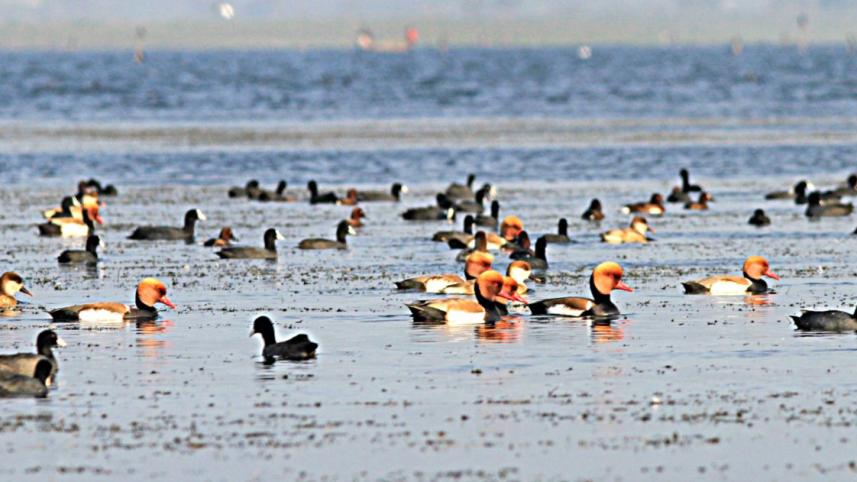A protective eye on avian species

Through the lenses of cameras and binoculars, researchers are now looking out for our avian friends who kept on flying for thousands of kilometres in search for sanctuary during the winter.
These researchers belong to a twelve-day wild bird monitoring and research camp progressing at Tanguar Haor, a protected wetland under the Ramsar Convention at Sunamganj district.
Such camp plays a vital role in understanding wild birds' seasonal migration and protecting the area's inhabitants, while the data helps understand climate change, pollution levels and many other factors.
The camp started off on January 28 with a monitoring team of International Union for Conservation of Nature (IUCN) along with Bangladesh Forest Department and volunteers of Bangladesh Bird Club, said ABM Sarowar Alam, senior programme officer of IUCN Bangladesh.
The monitoring and research camp will conclude on February 8 while the Waterbird Census for 2021, a part of the programme, will take place on February 2-3, Sarowar said.
For years, IUCN has been implementing the monitoring and research programme at Tanguar Haor, with support from Linnaeus University.
As part of the programme, the team conducts major activities like bird ringing (attaching tag with a unique code on to the birds for future identification), satellite tagging (attaching GPS devices to long-distance migratory ducks), and tracking movement using artificial intelligence (AI). Waterbird census is also a major part of the programme.
On January last year, a total of 51,368 birds of 35 species were recorded during the Waterbird Census.
The number was 1,50,000 birds of around 40 species in January 2019; 59,542 in 2018; 91,236 in 2017; 42,558 in 2016, and 52,299 in 2015.




 For all latest news, follow The Daily Star's Google News channel.
For all latest news, follow The Daily Star's Google News channel.
Comments